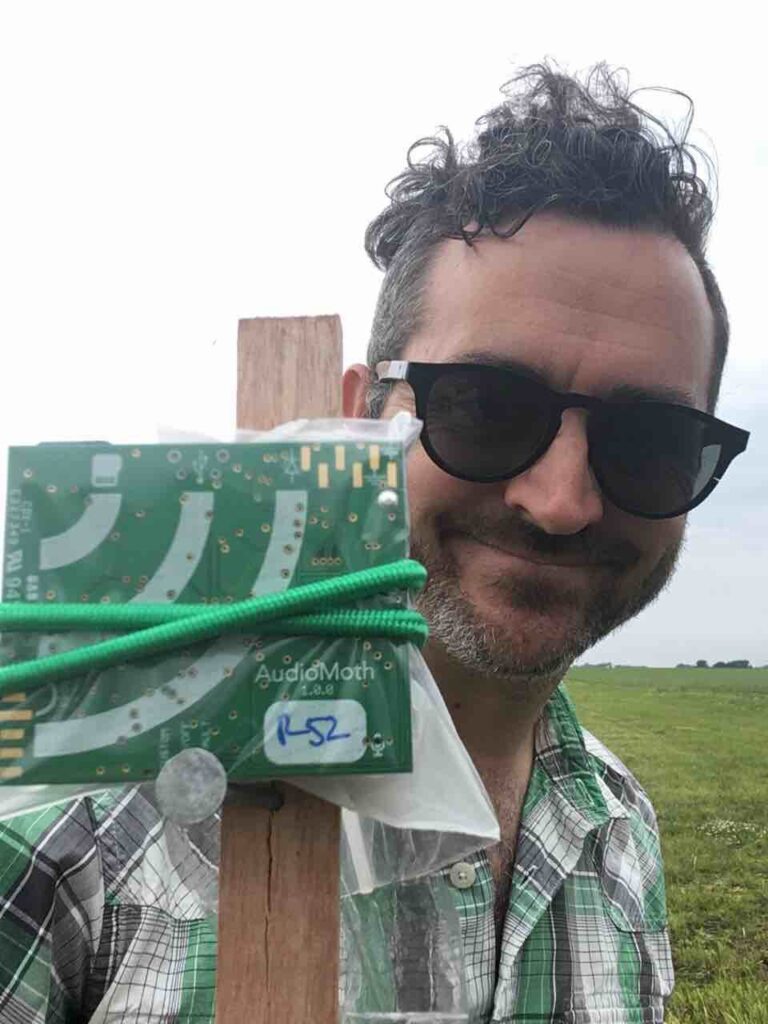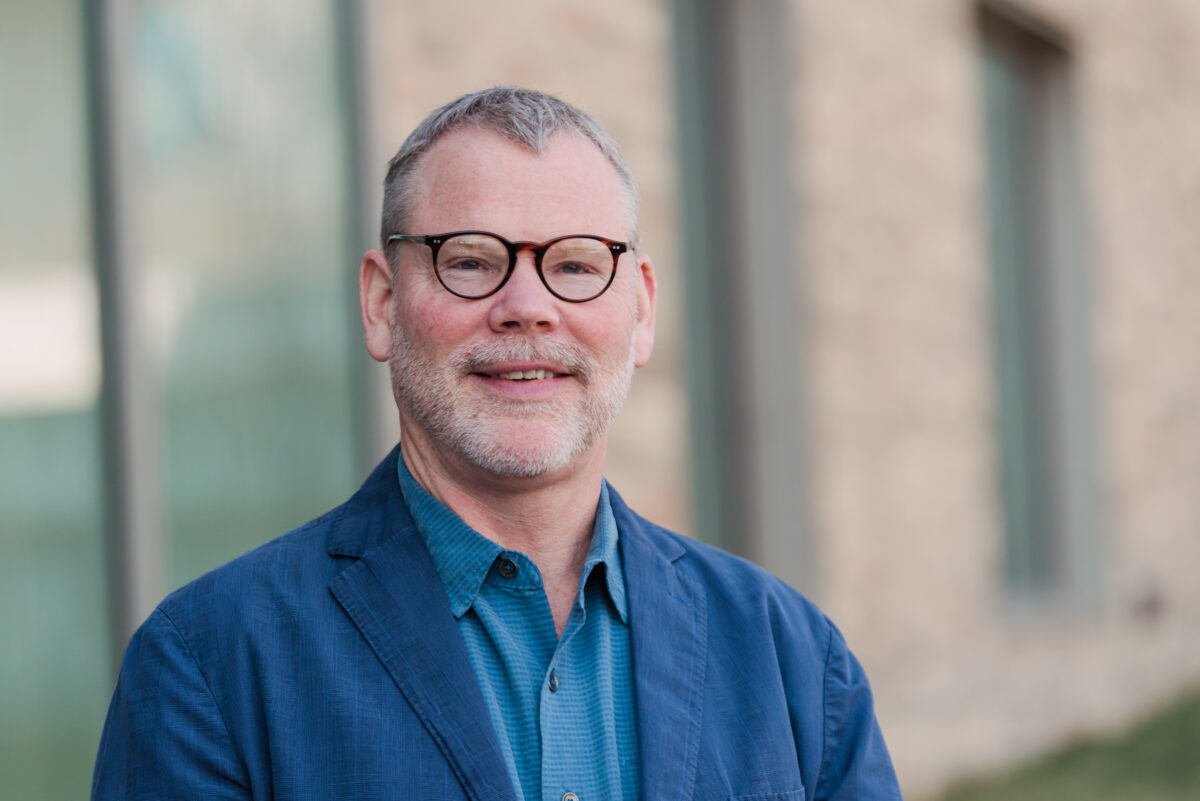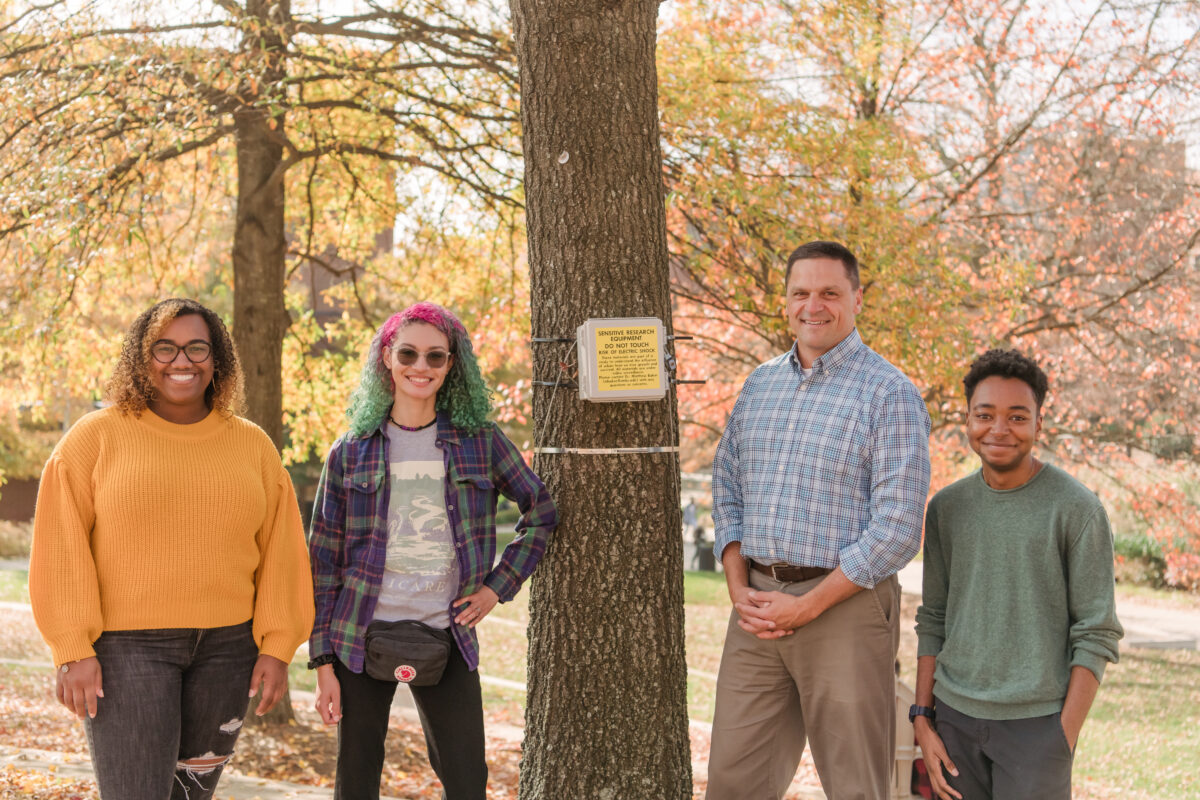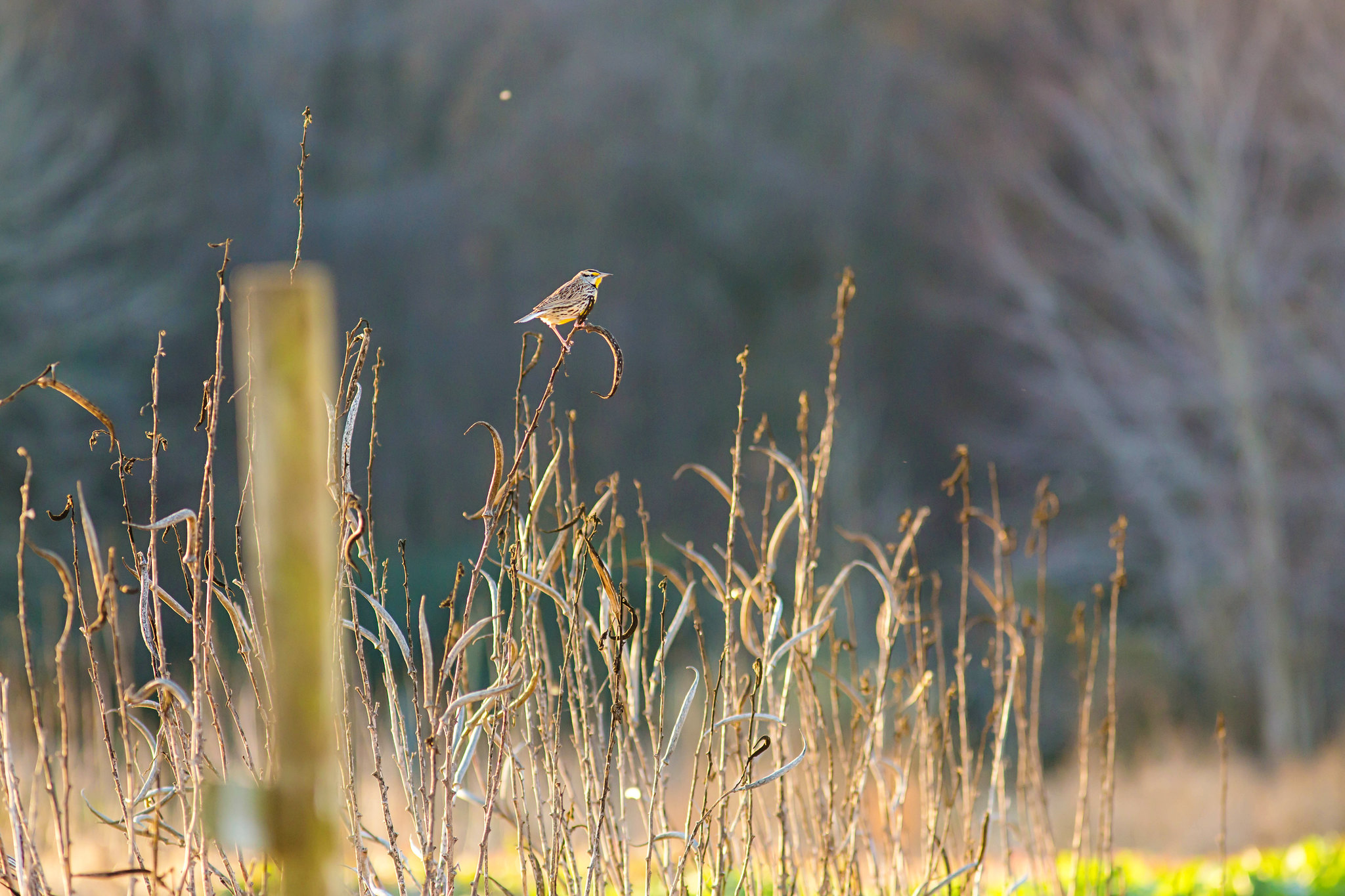Research led by Adam Dixon, Ph.D. ’21, geography and environmental systems, describes the successful pilot of a novel method to study how well grassland birds are faring on croplands. The study, published in Ecological Applications, may serve as a model for monitoring wildlife on working lands more generally, which can also include cattle ranches and logged forests. It’s an example of the kind of work that’s needed to help humanity move toward a more sustainable coexistence between agriculture and biodiversity.
Farmers lead a challenging existence, frequently operating on extremely thin financial margins and relying on fickle weather, Dixon says, which incentivizes them to simplify and control the landscape as much as possible. Unfortunately, that can lead to environmental harm. Grassland species are in particular peril given their habitat is converted to farmland at an alarming rate. Through his work, Dixon wants to help find a middle way that supports both farmers and the environment.

More, better habitat needed
The new study combined satellite imagery data and recordings from simple audio recorders to look at how grassland birds were using 44 pockets of vegetation in the gaps between crop rows and at the edges of fields on lands under intensive cultivation in Iowa. Both methods were low-cost and required very few visits to the lands under study, demonstrating the scalability of this approach to monitoring biodiversity.
The researchers analyzed the satellite imagery data to determine the pockets’ area and “texture,” referring to the variety in plant species, height, and density in the habitat. The bioacoustic recorders—essentially circuit boards with a battery and mini cell phone microphone attached, all sealed in a plastic bag—helped the team identify which bird species were using the habitat.
“Using novel methods, we found that agricultural habitats are good for birds in general, but when you look at grassland birds specifically, either there’s not enough habitat or the habitat characteristics aren’t good,” says Dixon, who studies working lands biodiversity in the northern U.S. plains for the World Wildlife Fund.
The study’s relatively small sample size limited the strength of the findings. Still, the study showed that their unique method combining satellite imagery and bioacoustic data can help researchers effectively measure habitat quality and bird biodiversity. The authors hope their work encourages future studies incorporating more study sites to strengthen the statistical power of the results.
Beyond protected areas
Erle Ellis, professor of geography and environmental systems, is senior author on the paper and served as Dixon’s Ph.D. advisor. Dixon says he knew working with Ellis would be the right fit after their first meeting.
“I saw a lot of research emphasis on protected areas,” Dixon says, whereas he wanted to focus on the intersection of intensive agriculture and ecology. Dixon grew up surrounded by large wheat farms in the Midwest and observed their effects on the environment, which informed his career goals. His formative experiences, he says, led to an understanding that protected areas alone are not enough to solve the biodiversity, food, and health challenges the U.S. and the world are facing.
“That’s why I came to work with Erle,” Dixon says. “His whole thing is, ‘Why are you trying to separate people from nature?’” Ellis’s work has focused for decades on the longstanding relationships between humans and landscapes across the planet.

“Agriculture covers more of this planet than protected areas do, and Adam’s research on bird habitats in Iowa farmlands confirms that even some of the most intensively managed agricultural landscapes on Earth can sustain significant biodiversity,” Ellis shares. “More research like Adam’s is needed to conserve, restore, and monitor biodiversity in the working landscapes needed to sustain both people and wildlife across more than three quarters of Earth’s land.”
Community collaboration
The new study is also an example of another aspect of the human elements of research, since it took place on privately held farmland. Dixon worked with landowners to get permission to conduct research on their property, and in some cases farmers placed the recorders themselves.
“It’s difficult but not impossible to work on private lands,” Dixon says. “You just need to build trust and relationships.” In the future, Dixon would like to deepen his collaboration with farmers. Gathering more information about their management practices would open up additional research questions. Plus, learning about any barriers farmers face to participating in research could make it more likely that other projects requiring farmer buy-in would get off the ground.
Other collaborators brought their own strengths to the paper: Matthew Baker, professor of geography and environmental systems and a co-author, added his expertise to the project, including his familiarity with using remote sensing methods for major mapping projects and combining on-the-ground measurements with satellite imagery to answer complex environmental questions. Baker’s previous research has included using such combinations to study urban tree canopy, streams in the Chesapeake Bay watershed, and the effects of a major dam removal.

“What was impressive about Adam’s investigation was his willingness to employ novel technology and ideas to overcome what has historically been an absolute challenge in surveying working landscapes,” Baker says. “His example has really shown the potential and the need for additional study.”
Supporting farmers and the environment
Questions remain as Dixon and others seek to support biodiversity on working lands.
“How do we move from the necessity for farmers to simplify the system to something that’s more balanced and takes into account the entire environment? To something that understands the unique ecology of a place and integrates that into management, and allows the farmer to prosper across generations? How can we find a better solution besides just hoping that we’re going to protect these small patches?” Dixon asks.
Those questions are why Dixon has pursued research into biodiversity on working lands, he says. While the new paper may be a small step to better understanding how wildlife is and is not flourishing on working lands, it is a step in the right direction and opens the door for future projects.
“We need to integrate conservation solutions into our most intensive places,” Dixon says. “So this research identifies that as an area of valid research and also shows how that research might be done.”
Tags: Alumni, CAHSS, GES, GradResearch, Research

